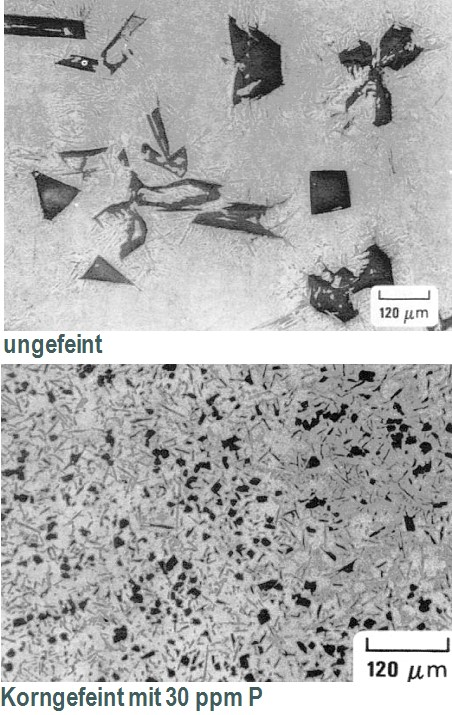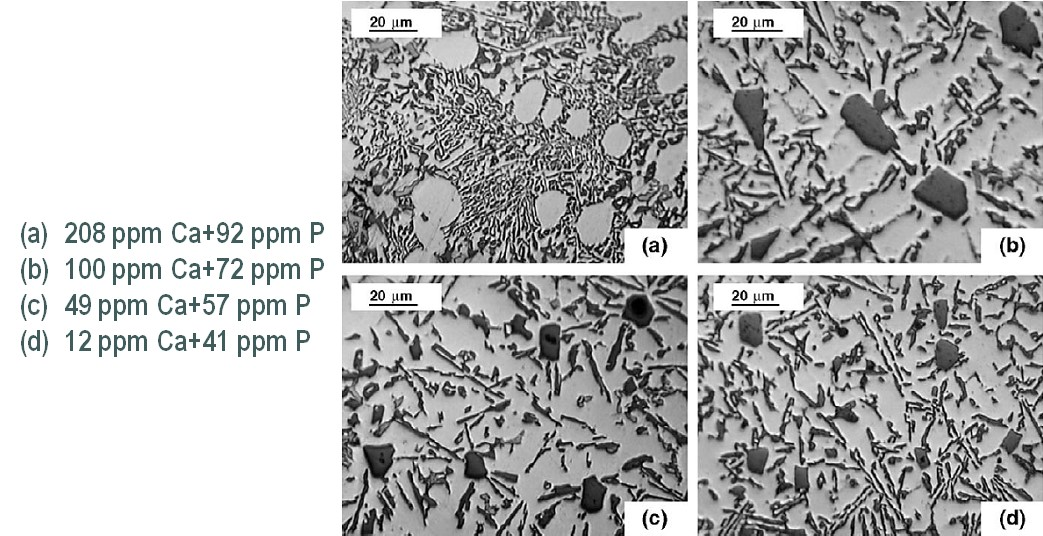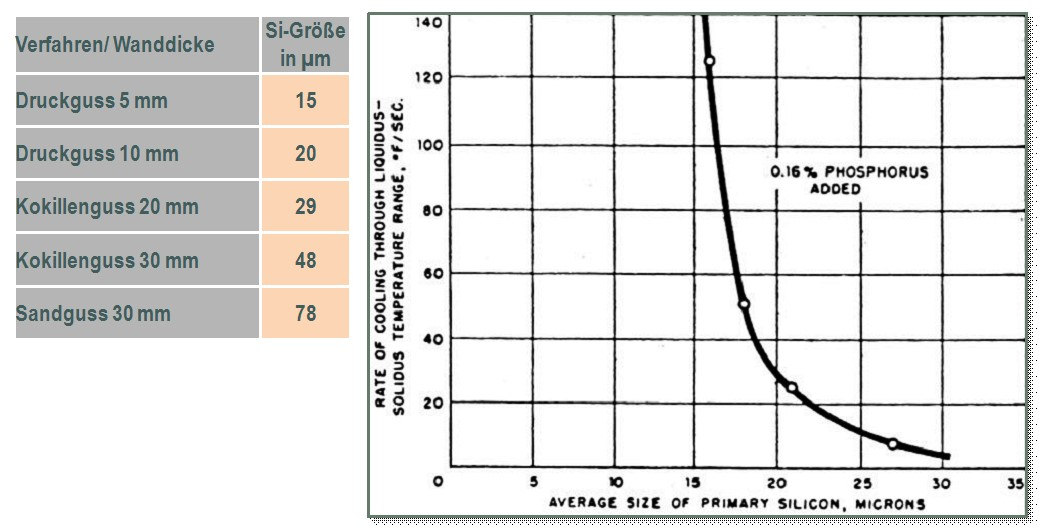Primary silicon
Precipitated silicon as the first phase in hypereutectic Al-Si alloys.
During further cooling, the Al-Si eutectic solidifies and is called eutectic silicon. The primary silicon in hypereutectic Al-Si alloys (Si >12.5%) can form in various ways (Figure 1). The morphology of the silicon depends on the solidification speed, the temperature gradient during solidification and the local chemical composition, specifically:
The various forms can occur next to one another in the structure. The primary Si phase is not generated through the remaining nuclei which occur in the Al-Si alloys. For this reason, the crystallization only begins with high under-cooling and only a small number of extremely large Si particles form.
To avoid rough, primary silicon, the grain refinement must therefore take place through heterogeneous nucleation. It has been discovered that phosphorus (P) is an effective grain refinement material (Figure 2) as it reacts with the AlP in the melt which has a similar crystal structure to silicon. The addition of grain refinement materials which contain P is relatively simple and can be done with
- Cu-P, Cu-Fe-P (for alloys which contain Cu)
- Fe-P, Ni-P (Ni3P nuclei, very effective)
- Salts or preparations which contain P
- Vacuum-packed P
Modifiers such as sodium (Na) and strontium (Sr) disrupt the grain refinement of the primary silicon, although they have an advantageous effect on the eutectic silicon. Traces of calcium (Ca) also have a negative effect on the grain refinement, whereby a disruption of the P grain refinement occurs with Ca > 100ppm (Figure 3). For good grain refinement, the melt should have a Ca content .
For the different casting processes, the primary silicon size is, however, in principle and primarily also considerably influenced by the solidification speed (Figure 4).
Additional references:
Permanent modification
Modification
Over-modification





